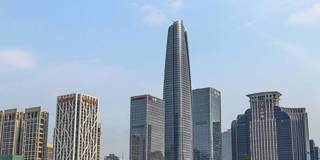
Shenzhen’s Next Transformation
There is reason to think that Shenzhen’s economic future will be bright: its annual GDP growth, at 6%, outpaces that of other Chinese metropolises, such as Beijing, Shanghai, and Guangzhou. But Shenzhen also faces serious challenges, beginning with the proliferation of sanctions targeting China’s tech sector.
HONG KONG – For decades, Silicon Valley has been the world’s quintessential tech hub. But plenty of Asian cities – such as Bangalore, Penang, Shenzhen, Singapore, and Taipei – have been working to build similar innovation ecosystems. Shenzhen, located in the southern Chinese province of Guangdong, has been particularly successful.